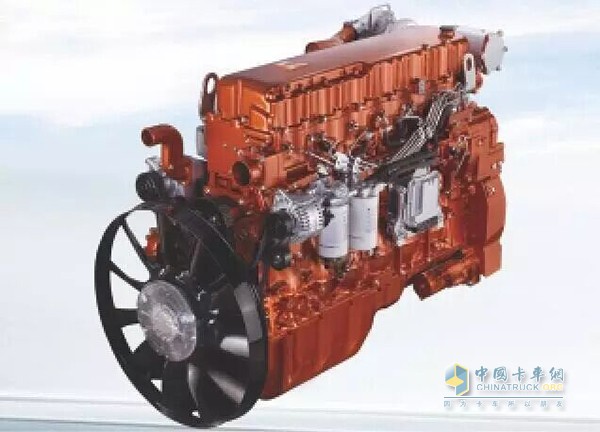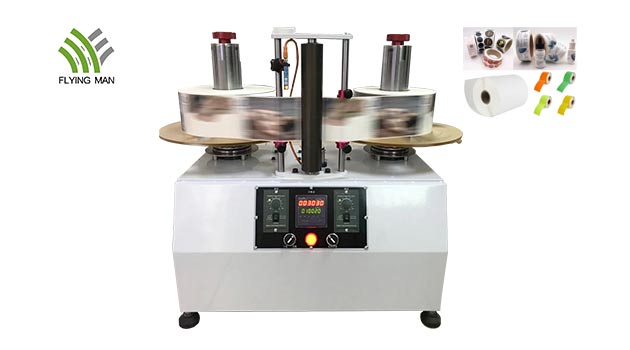United Power 6K series engines are jointly developed by Yuchai and Austrian AVL on the basis of DD13/15. At present, K12 and K13 series products are mainly used, and displacements range from 10L to 13L. They are suitable for single fuel and dual fuel such as diesel/LNG/CNG/methanol. Emissions meet Euro VI standards. At the beginning of the launch of the 6K series engines, the concept of “the most suitable conditions for use in China†was put forward. On the one hand, it was adapted to domestic special working conditions and driving habits. On the other hand, it was designed for future emission standard upgrades and high horsepower requirements. What improvements have been made to the joint power 6K series engine on specific technologies? Explosive pressure design----the future can be directly upgraded to Euro VI Judging from the current standard, the explosion-proof pressure in the engine cylinder of the State IV stage needs to reach 160 to 180 bar, and that of the national V needs to reach 180 to 200 bar. In the future, the EU VI emission standard must be met, and the explosion pressure in the cylinder must reach 200 ~220 bar, this is a great test for the overall structural design and material of the engine. Explosive pressure resistance design is a comprehensive project. The cylinder block, cylinder head, crank connecting rod mechanism and gas distribution mechanism of the engine must be designed for pressure resistance. Specifically, the 6K engine block adopts a symmetrical design, which is strengthened by a cast iron reinforcement plate, and the integrated seal ring design improves the strength and resistance to deformation of the cylinder liner. The crankshaft is made of high-strength forged steel and the full piston steel ring significantly reduces wear and deformation. The valve train adopts a high-intensity camshaft and a high-angle valve design, so that the wear resistance is good, the contact stress is reduced, and the pressure bearing capacity is greater. In this way, the explosion pressure of the 6K engine can reach 220bar, which is in sync with European and European VI engine products. In the future, when users need to upgrade, there is no need to replace or change the structure of the engine, and there is no need to worry about the change of pressure caused by the upgrade of emission standards. Counterflow Cooling Technology--High Efficiency Protection Engine As mentioned earlier, the design of the explosion-proof pressure of the engine, in fact, the cylinder head of the engine is an important part. Since the cylinder head is installed on the upper part of the cylinder, the cylinder is sealed from the upper part and constitutes a combustion chamber. It is often in contact with high-temperature, high-pressure gas, and therefore it is subject to large thermal and mechanical loads. Top-Down Cooling uses top-down cooling. Compared to traditional bottom-up and stratified cooling technologies, water flows from the cylinder head into the cylinder for cooling, with higher flow rates and cooling. The efficiency is also higher, especially to better protect the engine head. Top-DownCooling top-down cooling technology engine, the cylinder head temperature than the traditional cooling technology of the engine down more than 15 °C, this can greatly reduce the engine head and other core parts of the temperature sensitivity, material mechanical strength, thermal recession is obvious Falling, the overall stiffness, combustion and adaptability to different temperatures are significantly improved, but also can withstand higher burst pressure. Compression In-Cylinder Braking Technology - Improving Vehicle Safety Taking into account the road conditions in the country, especially in the southwest and Qinling areas, there are many slope sections, and domestic drivers often prefer to use overloaded driving. This is a great test for vehicle braking safety. In this regard, the 6K product adopts exhaust butterfly valve + compression type cylinder brake, which is also the current mainstream international high braking power, compared to the domestic use of exhaust butterfly valve brake and exhaust butterfly valve + slow release deflated cylinder system Moving, the braking performance is greatly improved, the braking power is up to 25kW/L, which greatly improves the safety performance. The principle of compression type cylinder braking is very simple, that is, by operating the exhaust valve, the engine cylinder is evacuated to a vacuum state to generate negative power. This type of brake structure is relatively complex, but the braking effect is the best. Reasonable use of engine brakes has great benefits in saving the operating costs of vehicles. Using engine brakes can significantly reduce the number of brakes used, and reduce brake linings and tire wear. At the same time, engine brake can improve the speed control of the downhill of the vehicle, and the efficiency of transportation is also effectively improved. In addition, when using engine braking, the engine will not spray oil to do work, but also can achieve the effect of fuel economy. Top cam four valve technology - strong power protection We can think of a valve as a person's lungs. When we exercise, we need a lot of breathing oxygen and excrete CO2. A healthy lung is the basis for determining our athletic ability. The same is true for the engine. The efficiency of an engine's intake and exhaust is an important factor in determining its performance. Because the speed of the piston is very fast during normal engine operation, the engine completes at a speed of 3000 r/min per minute. The intake or exhaust time is only 0.04 seconds. To inhale or exhaust more gas in such a short time, the effective area of ​​intake and exhaust must be increased. At present, the common engines in the domestic market are 2 or 3 valves. However, with the increasing market demand for high-powered engines and the continuous increase in engine power, such a structure cannot meet the requirements of low fuel consumption and low emissions. The intake and exhaust valves of the four-valve engine are increased to two, so that the gas flow area is larger. The more air that enters the cylinder, the more full the combustion is, the higher the efficiency is. At the same time, the engine power is also more fuel-efficient. The further improvement lays a solid foundation. In return, the overhead cam is used. Generally, the camshaft mounting position of the engine has three types: lower, middle, and top. The camshaft is placed on the cylinder head and above the combustion chamber so that it can be directly driven. Rocker, valve, without having to drive through a long push rod. Although the overhead camshaft makes the structure of the engine more complex, the corresponding engine parts are much smaller, thereby significantly reducing the weight of the engine, while also improving the transmission efficiency and reducing the operating noise. Modular design ---- enhanced functionality to reduce the difficulty of maintenance The Modular Revolution started in the United States and quickly swept all areas of manufacturing, setting off a boom in the engine sector. Relatively late, and domestic in this area is just starting stage. Modularity uses a metaphorical way of figuratively figuring out “building blocks†by splitting the original whole into independent individuals or integrating certain scattered functions into individualized individuals and then stitching them together with the main body. The goal of modularization is to improve product reliability, ease of follow-up maintenance, and reduce the cost of products through professional modular production. 6K is also an earlier domestic engine product that adopts a modular design. The modular components mainly include an integrated oil cooler, an integrated intake manifold, an overhead single cam distribution mechanism, and an integrated front-end wheel train. The focus is on improving product reliability, applying thermal management technology, improving maintenance convenience, and reducing maintenance costs. For example, the integrated oil cooler integrates the machine filter, the water pump and the thermostat. The compact structure and powerful function make the oil cooler more efficient and the resistance to water flow lower. Through the application of the above-mentioned five technical features and other technologies, the joint power 6K engine ensures high efficiency, fuel economy, durability and reliability while maintaining strong power. It also takes into account safety and future emission upgrade requirements. Desktop Label Rewinding Machine
Desktop Automatic Label Rewinder
Flying Man desktop rewinding machine is suitable for rewinding roll materials, such as labels, trademarks, film, paper, aluminum foil with below functions: rewinding, counting the number of sheets, counting the number of meters, quantity display, set the number of automatic stops, adjustable speed, smooth rewinding, rewinding tension can be adjusted. It's efficient, convenient, easy operation and practical.
Tape Winding Machine,Label Rewinding Machine,Automatic Label Rewinder,Automatic Motor Winding Machine Suzhou Flying Man Assembly Automation Co., Ltd. , https://www.flyingmans.com United Power 6K Series Engine
United Power 6K Series Engine 
With the national IV emission standards set aside in the country, national V emission has been gradually implemented in various regions, followed by the trend of emission reduction. Another wave of promoting efficient and fast logistics has come one after another, giving birth to the market for high horsepower engine products. The demand for domestic semi-trailers quickly entered the era of 400 horsepower. The joint truck has benefited from a forward-looking strategic layout. As early as 2010, it launched the large horsepower joint power 6K series engine developed based on Euro VI.